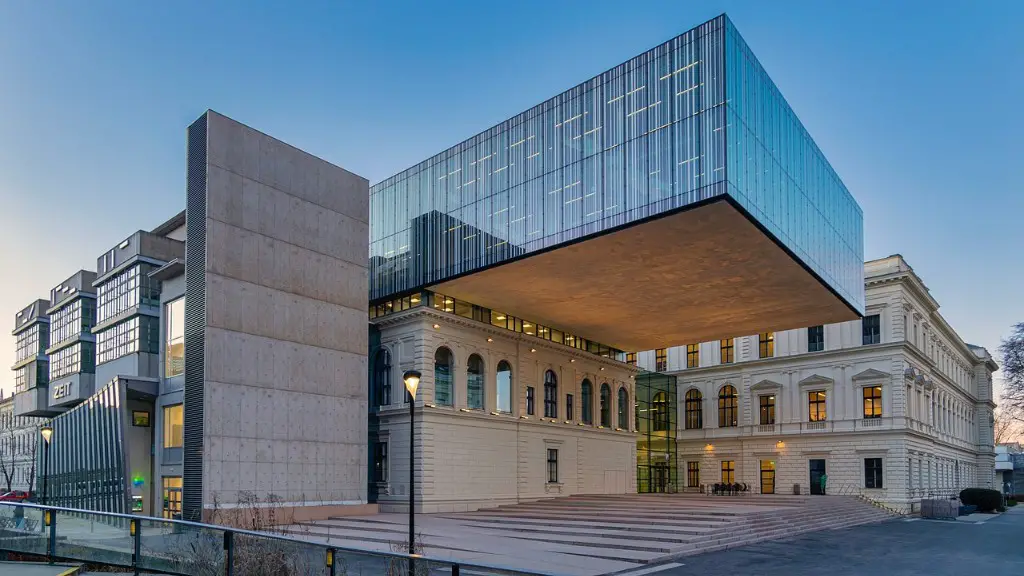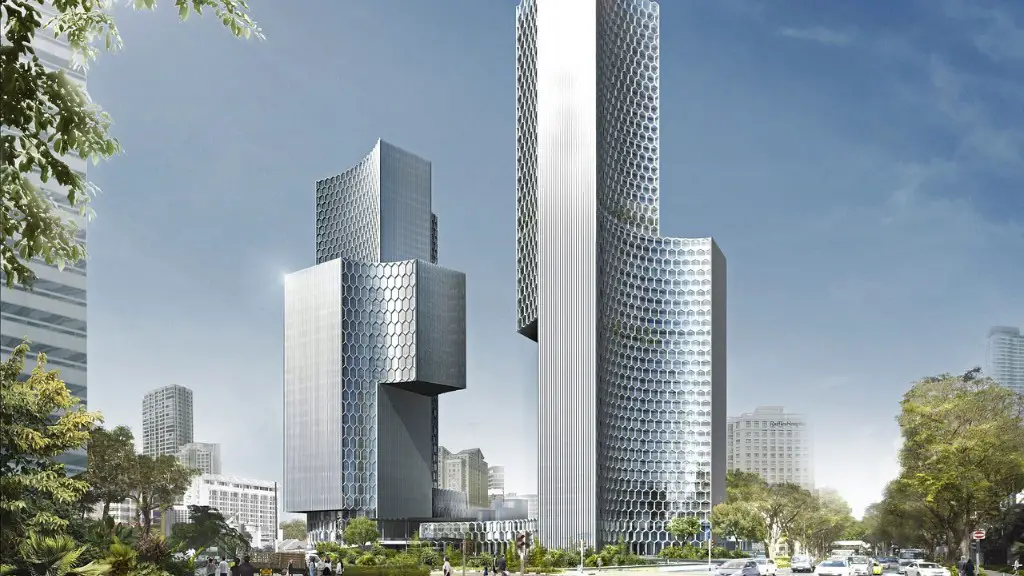What Is Architecture About
Architecture is an art, a science, a skill, and a way of life. It blends the physical and spiritual elements of design to create functional structures that express both beauty and practicality. It is about finding harmony in the structure and its relationship to the environment and its inhabitants. Architecture is about making places and experiences that are meaningful and enriching.
At its most basic level, architecture is about the design of buildings; but it also takes into account the design of objects, urban environments, and even public spaces. Designing a building requires an understanding of its purpose and how it will be used. It also needs to consider the materials that will be used, the structural integrity of the design, and how it will interact with the landscape. Architects often collaborate with other experts in structural engineering, energy conservation, and urban planning when creating a structure.
Architecture can be a powerful tool for social change. Architects have the ability to shape our environment, to give form to ideas, and to create places where culture and communities can come together. Architects play a vital role in promoting sustainability and creating resilient infrastructure, working with other professionals to create buildings and spaces that are capacity-building and resource-efficient. By understanding the impact of buildings on the environment, architects can create structures that are more sustainable and compatible with the natural environment.
Architecture also has a strong aesthetic component. The design of a building can be just as important as its functionality; the form, shape, and materiality of a building can be used to create an emotional connection with the patrons. Good architecture is designed to be aesthetically pleasing and to evoke a certain emotion or feeling in the user.
Architecture is more than just designing, building, and maintaining structures. It is about creating places and experiences that are meaningful to people and promote wellbeing. Architects have a unique understanding of how human beings can interact with the built environment and create places where people can live, work, and play in safety and comfort. At its core, architecture is about creating places and experiences that foster connection and community.
Education and Professionalism in Architecture
The practice of architecture requires a specialized education to understand the complexities of building design and the impact of architecture on individuals and communities. An architectural education prepares graduates to understand the various elements of design, ranging from structural fundamentals to the composition of spaces and materials. Architects must also be well-versed in legal and regulatory codes and other zoning laws that are relevant to a particular project.
Professionalism in architecture requires a commitment to ethical principles, a commitment to quality, and to the safety of the public. The role of the architect is to ensure that their designs adhere to applicable laws, regulations, and codes. Architects ensure that their designs are both practical and safe for the inhabitants. They also strive to guarantee the sustainability of the building, using energy-efficient and environmentally friendly materials.
Becoming an architectural professional requires the completion of either a four-year bachelor’s degree in architecture or a three-year master’s program. The majority of U.S. states and jurisdictions require a minimum of a bachelor’s degree in architecture and professional certification as a registered architect before candidates can practice. Once certified, architects have the opportunity to specialize in various areas of design and participate in the development of our built environment.
Architecture in the Digital Age
The technological advances of the 21st century have had a transformative effect on the practice of architecture. Computer-aided design (CAD) and virtual reality (VR) have enabled architects to visualize and design buildings with greater accuracy and efficiency. New materials, construction processes, and advances in energy efficiency have opened up new possibilities for architects to create innovative and sustainable designs.
Today’s architects are exploring new ways to use technology and data to understand, visualize, and solve complex design challenges. Using data science, machine learning, and artificial intelligence, architects can create information-rich building designs that are tailored to the specific needs of their occupants. For example, architects can use data to create personalised, energy-efficient spaces that respond to the changing needs of building occupants and the environment.
Advances in technology also mean that more people can participate in the design process, enabling architects to co-create with their clients, the public, and other stakeholders. By bringing more experienced professionals and the public into the process, architects can create better, more inclusive designs that take a wide range of perspectives into consideration.
Architecture and Social Inclusion
Good architecture not only has to be beautiful and functional, it must also be inclusive and accessible. Architects have an obligation to create places and spaces that are universally accessible and inclusive of all members of society. This means taking into consideration the needs of those who are disabled, elderly, or have other special needs. Inclusive design should seek to accommodate diverse requirements and the varied needs of people.
Architects must also be mindful of their role in shaping the built environment to address issues of social equity and justice. Architects can work to create designs that are supportive of vulnerable and disadvantaged communities, foster civic engagement, and promote economic opportunity. To this end, architects should be actively engaged in dialogue with communities and local stakeholders to ensure their designs meet the needs of diverse stakeholders.
Architecture is more than just the design of buildings; it is the art of creating spaces and experiences that are meaningful, sustainable and accessible. Architects strive to design structures that reflect the values and needs of their occupants, while also being sympathetic to the environment and its inhabitants. As our built environment continues to evolve, architects will continue to play an important role in creating places that generate lasting value.
Architectural Representation of Culture
Architecture is intrinsically linked to culture and community. It reflects the values, beliefs and traditions of a place, and it is an expression of the people that inhabit it. Throughout history, architecture has been used to convey power, wealth, and prestige; but it is also used to challenge the status quo and express alternative opinions or perspectives.
Architecture can act as a powerful tool to preserve cultural heritage and foster a sense of identity and belonging. By using design elements from traditional cultural practices, architects can create buildings and public spaces that reflect the history and culture of the community. This form of design encourages community pride and a connection to a larger history and culture. At the same time, architects have an obligation to respect the diversity of cultures and crafts.
The use of technology has also opened up new possibilities for the representation of culture in architecture. Architects are able to create digitally enhanced designs that integrate physical elements with digital technology. This can be used to create interactive experiences that engage users and help transmit cultural stories, transforming the architecture into an experience that reflects the community’s values and history.
Architecture as a Career
Working as an architect can be an incredibly rewarding career path. Architects are creative problem-solvers who have the opportunity to transform the built environment and create meaningful places for people. Architects get the satisfaction of seeing their design come to life and the knowledge that their work has a positive impact on their communities.
Architects must be creative, analytical, and detail-oriented. An architectural education provides graduates with the skills and knowledge necessary to create innovative and sustainable designs. Architects also need to be adept at working with other experts in engineering, urban planning, and sustainability, as well as skilled in communicating with clients and other stakeholders.
Architecture is highly competitive field, so architects must be passionate and willing to work hard in order to be successful. A successful architect must have a commitment to excellence, a passion for design, and the willingness to reach beyond their comfort zone in order to create unique and meaningful places.
Architecture and Sustainability
Architects have a unique opportunity to shape our built environment in a sustainable and resource-efficient manner. Architects are uniquely qualified to create designs that are energy-efficient, reduce waste, and use sustainable materials. Architects should strive to create places that embrace nature and promote a healthy and sustainable lifestyle.
There are a number of factors that architects must consider when designing a building to ensure it is as sustainable as possible. These include incorporating renewable energy sources like solar power, selecting materials that are durable and require minimal maintenance, and ensuring the building has good insulation to reduce energy use. Additionally, architects should take into consideration the effect of the building on its surroundings, including water and air quality, noise, and light pollution.
Architects have an obligation to create buildings and environments that promote sustainability, responsibility, and stewardship. By designing with a commitment to sustainability, architects can help create a healthy, resilient built environment that benefits both people and the planet.





